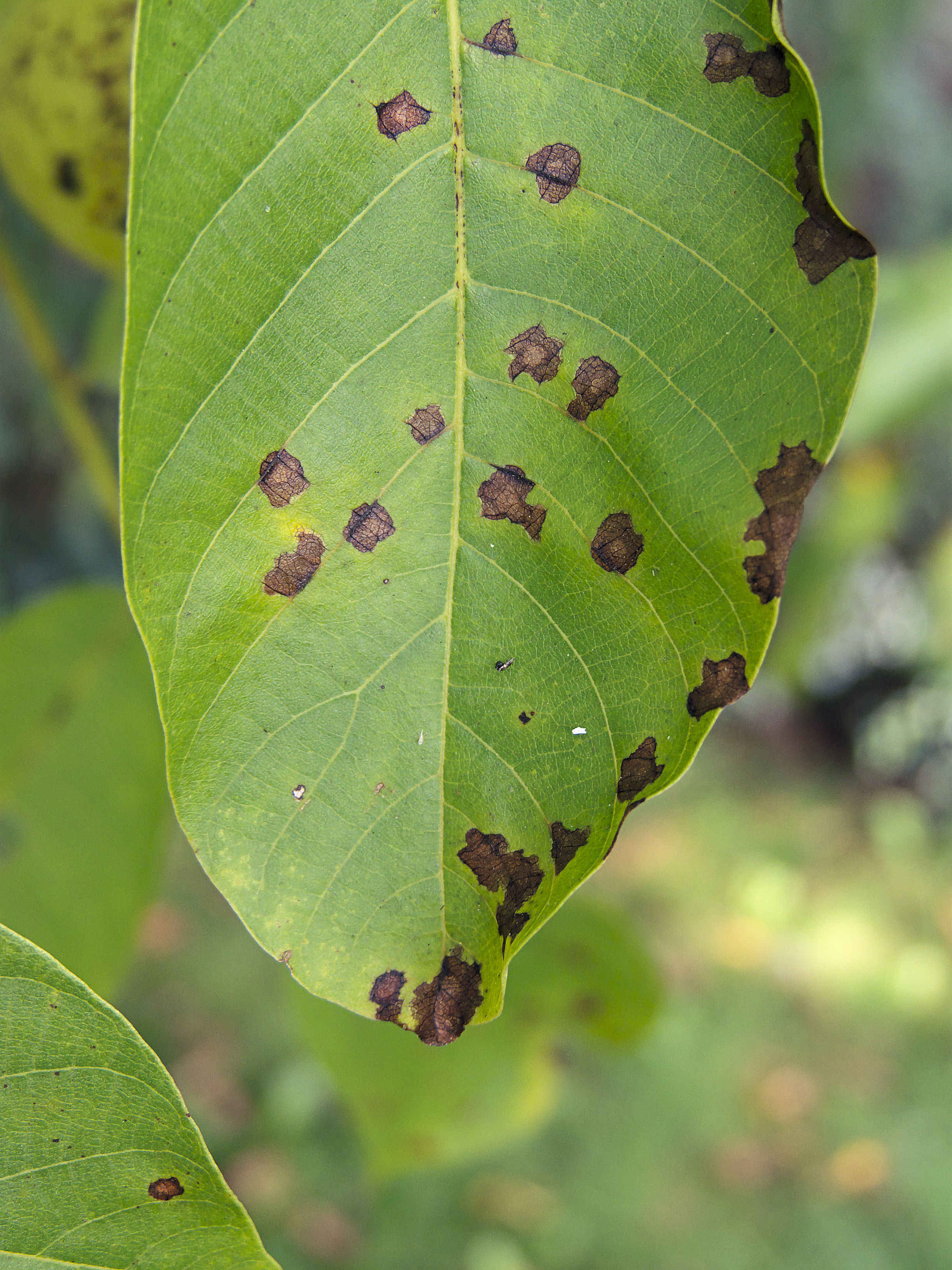
Anthracnose
Gnomonia leptostyla
What is Anthracnose (Ophiognomonia leptostyla)?
Anthracnose, caused by the fungus Ophiognomonia leptostyla (previously Gnomonia leptostyla), is a plant disease with a wide distribution, affecting various host plants. It particularly impacts walnut (Juglans spp.), leading to significant defoliation and reduced yield. Symptoms of anthracnose include circular to irregular reddish-brown to grayish-brown leaf spots, oval to irregular sunken dead areas on stems, and depressed circular to irregular dead spots on husks. This fungal disease poses a significant threat to crops and requires proper management practices for control.
How does Anthracnose (Ophiognomonia leptostyla) occur?
It reproduces through various mechanisms. It overwinters in infected leaves and nuts on the ground or in twig cankers. Spring rains trigger the release of ascospores from fruiting bodies in the old diseased plant parts, which are then dispersed by wind and cause primary infections. The fungus also produces conidia in twig lesions, contributing to secondary cycles of infection. The successive generations of spores facilitate the spread and persistence of the disease.
Symptoms
1 - Impacts on Plants
Ophiognomonia leptostyla severely defoliates plants, reduces yield, and impairs fruit quality, leading to significant economic losses. Infected leaves and nuts act as a fungal reservoir, perpetuating the disease in the soil.
2 - Effects on Soil and Environment
• Leaf and twig litter affected by anthracnose can impact nutrient cycling in the soil, potentially affecting the availability of essential elements for plant growth. • The presence of the anthracnose fungus and the decomposition of infected plant material can influence the composition and activity of soil microbial communities. • Anthracnose can impact the natural balance and interactions within ecosystems where host plants are present, potentially affecting biodiversity.
Solutions
1 - Cultural Control
• Rake and destroy fallen leaves and nuts to reduce the source of infection. • Prune and remove infected twigs and branches when possible. • Maintain adequate nitrogen fertility to promote plant health. • Remove and destroy infected plant debris to prevent the fungus from overwintering and spreading. • Avoid planting susceptible hosts in the same area consecutively to reduce disease pressure. • Select plant cultivars that have shown resistance or tolerance to anthracnose.
2 - Chemical Control
• Fungicides that are commonly used include Abound, Aproach, Bordeaux, Cevya, Copper hydroxide materials, Champ WG, Kocide 3000, Nu-Cop 50 DF, Flint Extra, Inspire Super, Luna Experience, Luna Sensation, Merivon, Miravis Prime, Pristine, Propiconazole-based fungicides, Bumper 41.8 EC, Propi-Max EC, Tilt, Quadris, Quadris Top, Quash, QuiltXcel, Rhyme, Syllit FL, Tesaris, TopGuard, and Topguard EQ. • Follow label instructions, including application timing and dosage. • Rotate or alternate fungicides to prevent resistance development.
